It is this season of the year that we devote our time to pray, repent and sacrifice.
And one of the annual traditions of the Catholic faithful this Lent is the Visita Iglesia, the act of visiting and praying to at least seven churches usually done on Maundy Thursday (Jueves Santo).
Here in Pampanga, Kapampangans are way blessed to have several historic and beautiful churches to fulfill this pilgrimage. We also have this belief that our wishes will be granted after completing the Visita Iglesia.
So what’s your wish? Where to go first and last? Check this list and be astonished by the exquisiteness of Pampanga churches.
1. San Bartolome Parish – Magalang
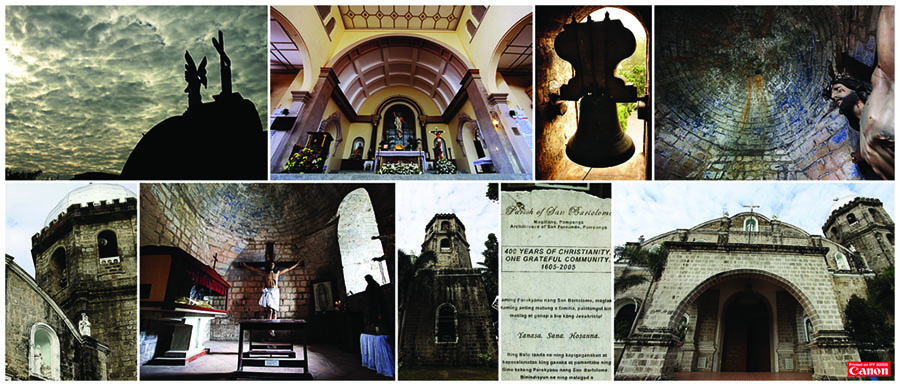
Established by the Augustinians in 1605, the church was moved to Barrio San Bartolome in 1734, and was swept by the Parua River in the flood of 1863.
It was re-established in Barrio San Pedro on December 13, 1863.
An interplay of arches, on its facade, main entrance, doors and niches, pediments and fenestrations, including those of the bell towers and adjacent convent suggest a touch of baroque.
2. San Luis Gonzaga Parish – San Luis
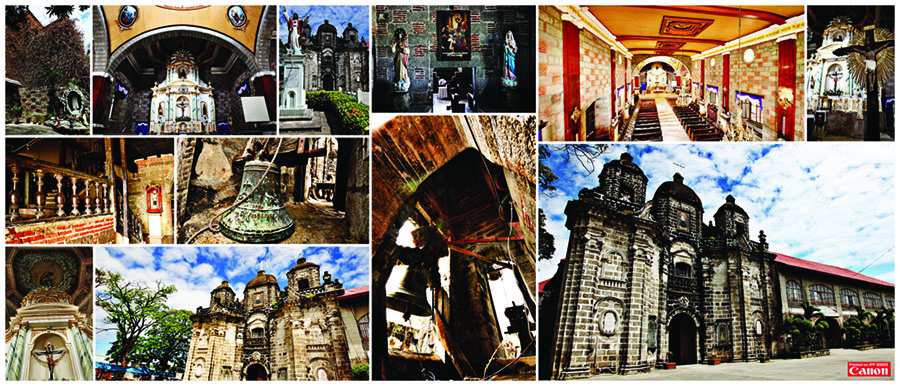
The San Luis Gonzaga Parish Church or the San Luis Church is a 19th-century Baroque church located at Barangay Poblacion, San Luis, Pampanga dedicated to Saint Aloysius Gonzaga.
3. San Nicolas de Tolentino Parish – Macabebe
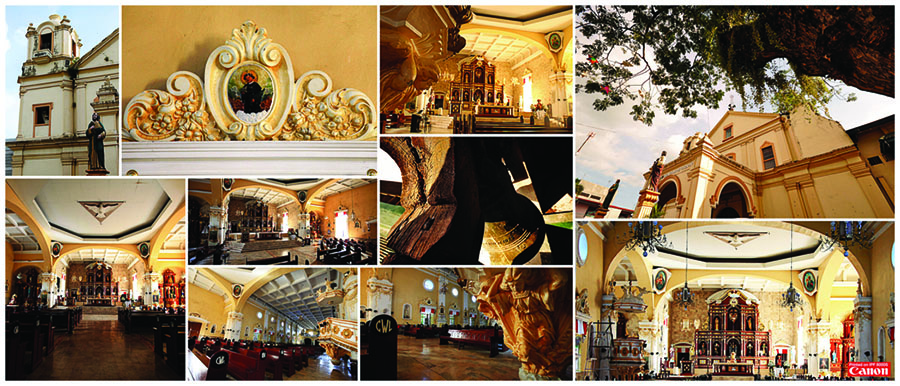
Founded in 1575, the church notwithstanding its facade’s scanty ornamentation and simple lines has undergone reconstruction, particularly in its interiors. Its new retablo reflects its Augustinian roots. The belfry though still houses the church’s original bells dating to the mid-1800s.
4. St. Andrew Parish – Candaba
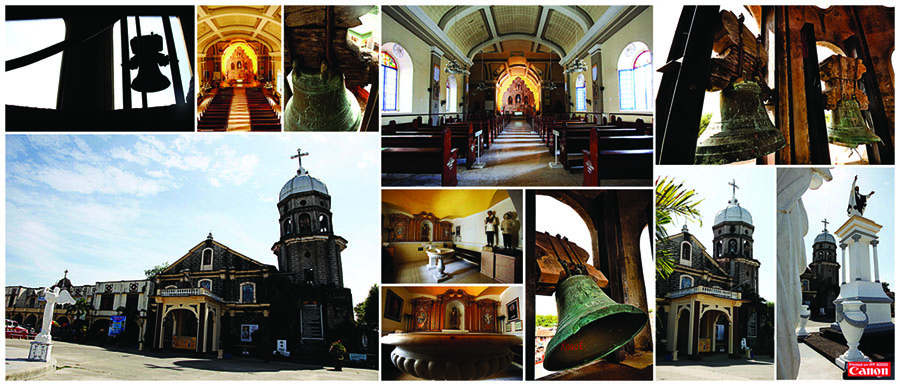
Scant information put 1575 as the year the church was established at the highest uninundated part of the town, lying as it is in a swamp.
The facade of the church has a scarcity of ornamentation, the simplicity of line maintained in the triangular pediment with its protruding center. A new feature of the facade is the depressed three-centered arches of the windows on the second level. The second level is separated by a cornice decorated with geometric designs.
5. Hacienda Ramona Chapel – Porac
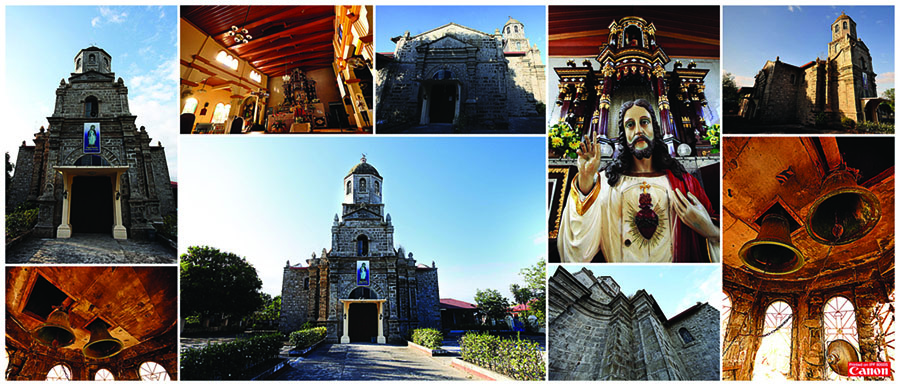
Believed to have been built by either Augustinian missionaries or the Filipino clergy during the period when the Spanish missionaries were expelled from Pampanga in the period of 1772-1791. Unique for its bell tower. A point of interest on the altar is the carved image of a priest in cassock and stole preaching to a tribe of Aetas atop builders buffeted by floodwaters – a foretelling of the lahar rampages in the wake of the Mt. Pinatubo eruptions.
6. St. Peter the Apostle – Apalit
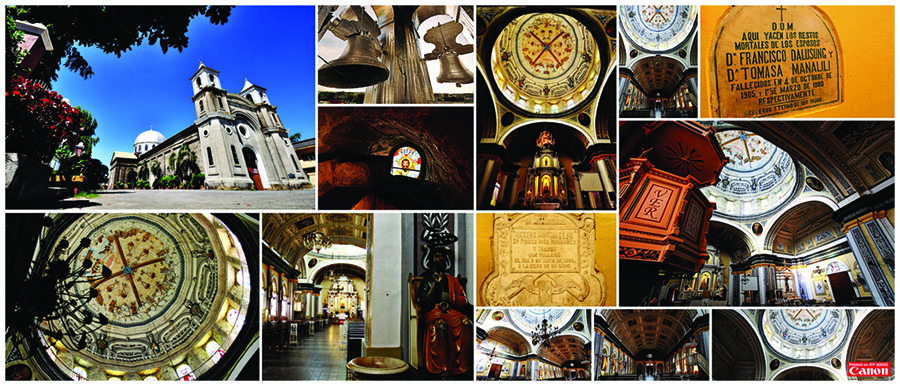
The present neo-classic church was constructed in 1876-1883 by Mariano Santos of Guagua under the direction of Fr. Antonio Redondo. The two rectangular bell towers with pagoda roofs were completed under the guidance of Rev. Toribio Fanjul in 1896. On the ceiling are trompe l’oeil murals said to be done by an Italian free-lance painter named Cesare Alberoni or a pupil who is a native of Apalit. The cupola is painted with a folksy rendition of the Apocalypse. At the center is the seated ivory image of St. Peter said to be have come from Spain.
7. St. James the Great Parish – Betis, Guagua

Most know as Betis Church, this Baroque style church located in the Betis District in Guagua in Pampanga church was established in 1607 and dedicated to Saint James, the Apostle. It was declared a National Cultural Treasure by the National Museum and the National Commission for Culture and the Arts.
8. Pio Chapel – Porac

Erected in 1861, the oldest domical church in the Philippines – reputedly – was a part of a hacienda during the Spanish period. It served as a private chapel of the Gil and Toledo families of Porac. Still extant is its circa-1800 bell.
Behind the altar, on the blue-tiled floor are the tombstones of Don Felino Gil, founder of the Escuela de Artes y Oficios (the Bacolor School of Arts and Trade, now the Don Honorio Ventura State University) and the Colegio in Guagua town, and his wife, Dona Euugenia Gil.
9. Sta. Ana Parish – Sta. Ana
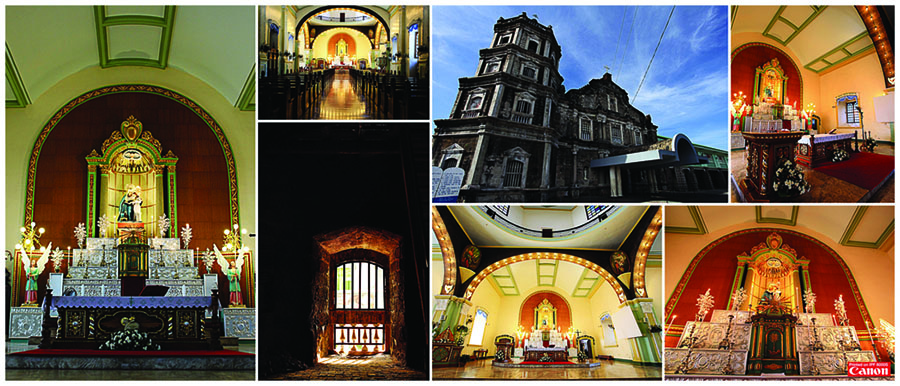
St. Anne parish’s present church is made of stone and bricks. The heritage building was constructed by Fr. Ferrer in 1853 and completed by Fr. Lucas Gonzalez using adobe stones from Meycauayan City, Bulacan and wood from Betis and Porac, Pampanga.
The church is 58 meters long, 14 meters wide and 13 meters high.
10. Sta. Catalina de Alejandria Parish – Arayat
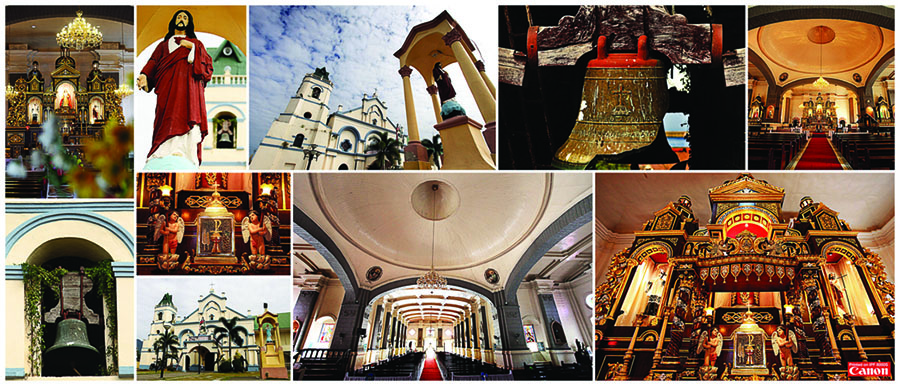
A Rennaisance style stone and brick structure erected in 1753, rebuilt by Fray Jose Torres in 1858 and was finished in 1892. Sta. An image of Sta. Catalina is seen on the church portico.
11. Santa Lucia Church – Sasmuan
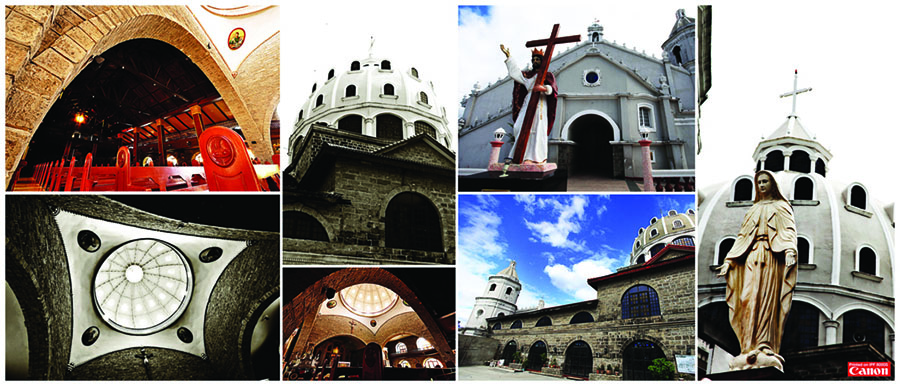
The Santa Lucia Parish Church in Sasmuan is the first church in the province built by Augustinian priests. Founded in 1590, Santa Lucia is a parish of the Vicariate of St. Joseph in the Archdiocese of San Fernando.
12. Sta. Rita de Cascia Parish – Sta. Rita
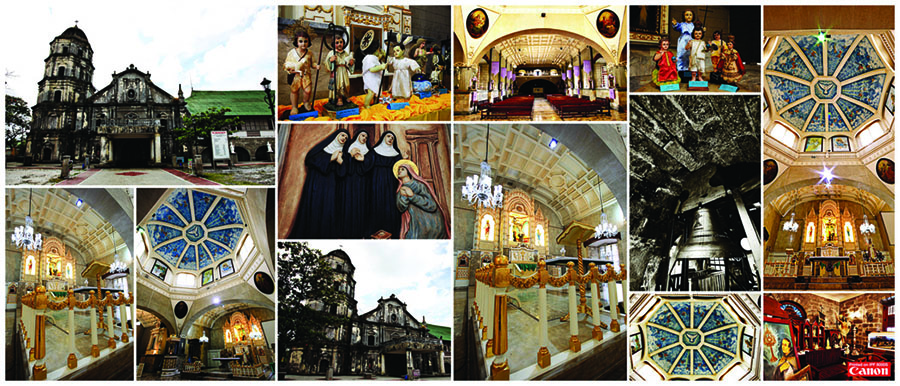
The present parish was built by Fr. Francisco Royo in 1839 and was completed by Fr. Juan Merino completed in 1868. The single-nave church is 55m long, 13m wide and 10m high.
13. Sta. Monica Parish – Minalin
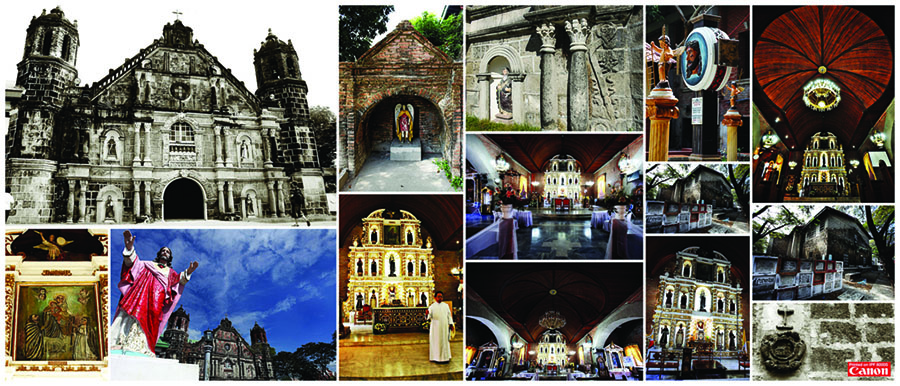
This Baroque church located in Poblacion area of San Nicolas in Minalin was built during the Spanish era and was declared a National Cultural Treasure by the National Commission for Culture and the Arts and the National Museum of the Philippines in 2011.
Visita Iglesia in photographs revisited
All these stunning shots were displayed in an exhibit dubbed Visita Iglesia Edifices of the Kapampangan Faith Revisited at SM Malls in Pampanga and Manila in 2012 and 2013. The three-man exhibit was a project of veteran Pampanga journalists Deng Pangilinan, Bong Lacson and Peter Alagos.

Have a safe and meaningful observance of the Holy Week.
–Photos by Deng Pangilinan, Bong Lacson and Peter Alagos